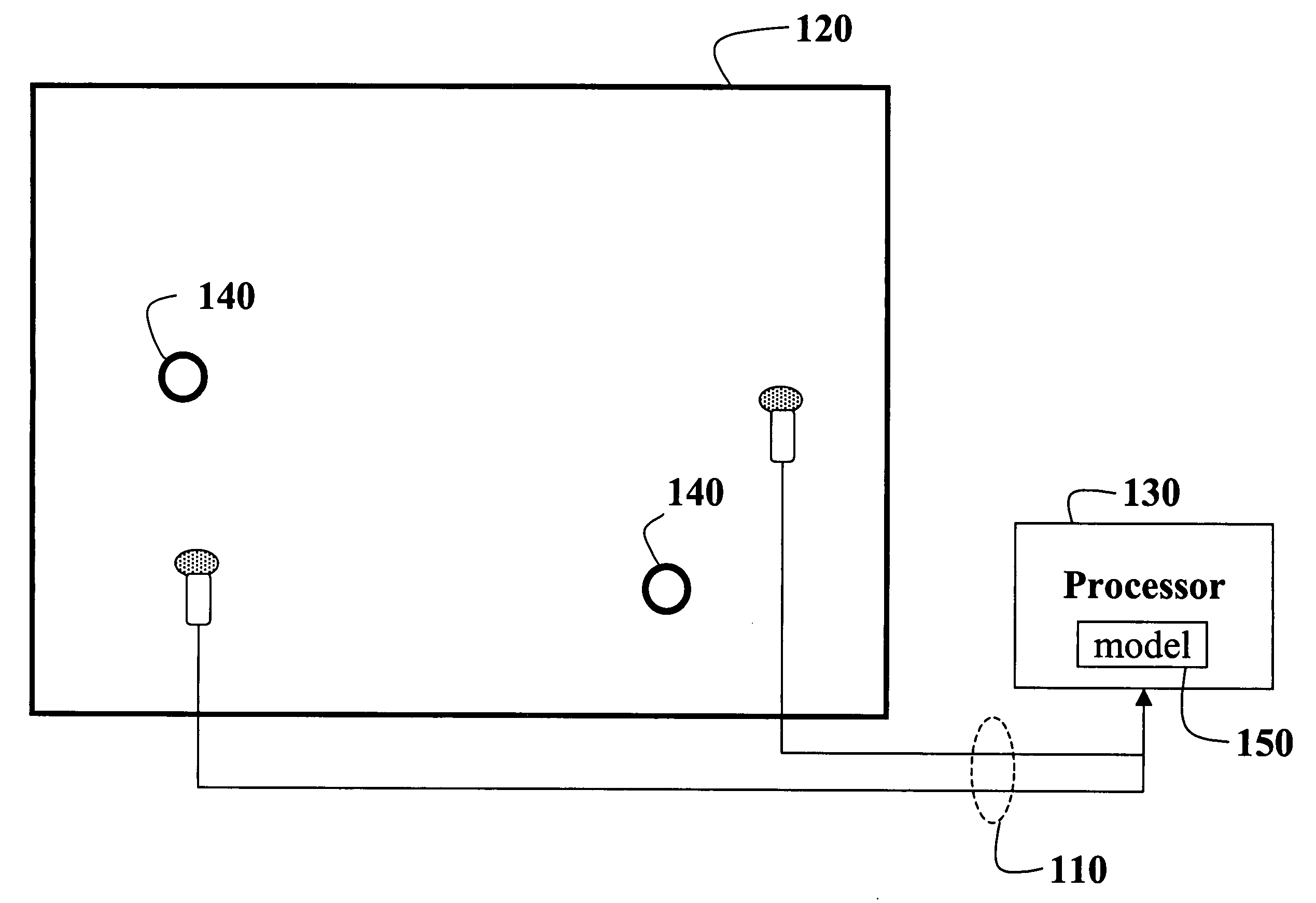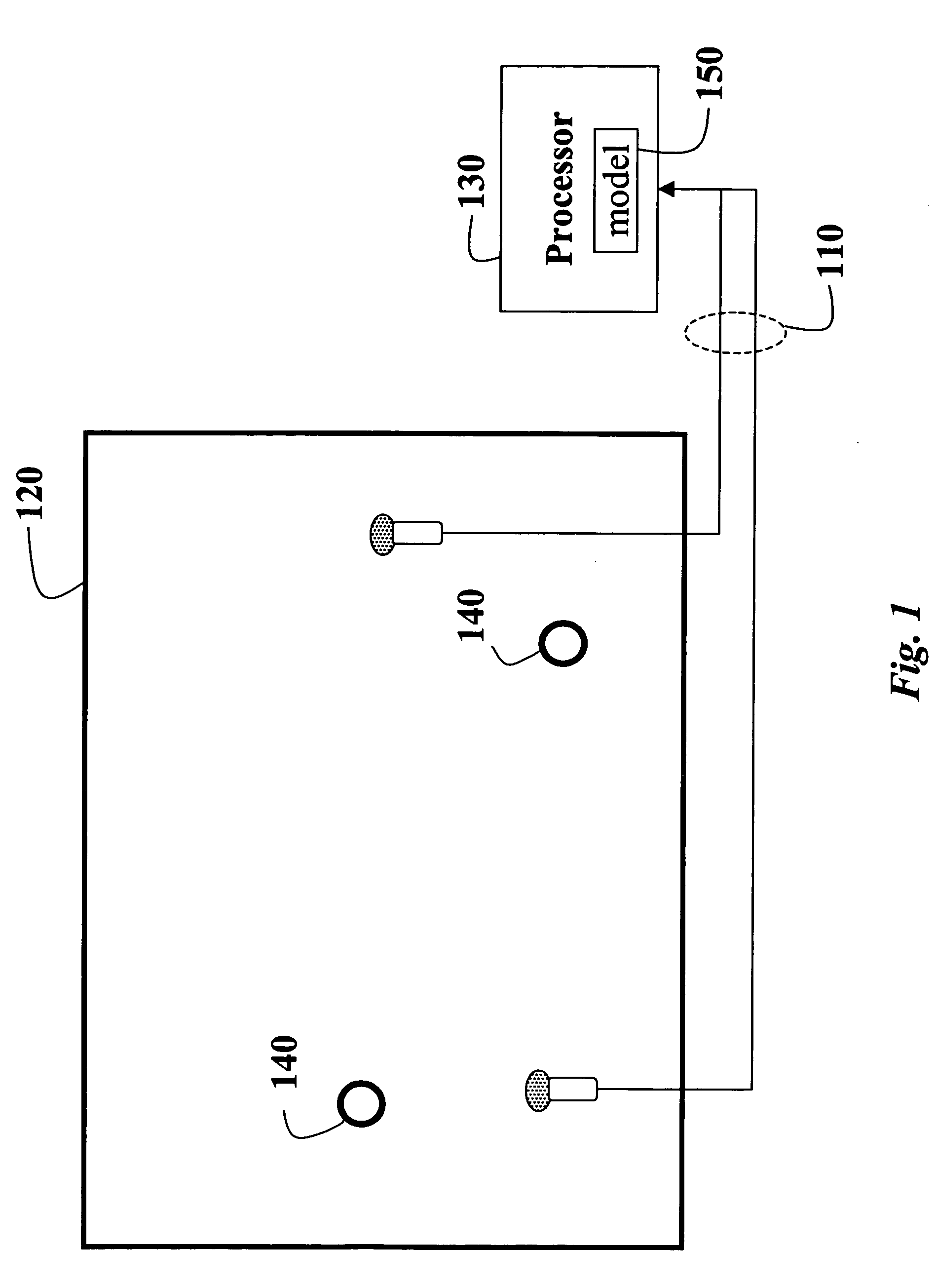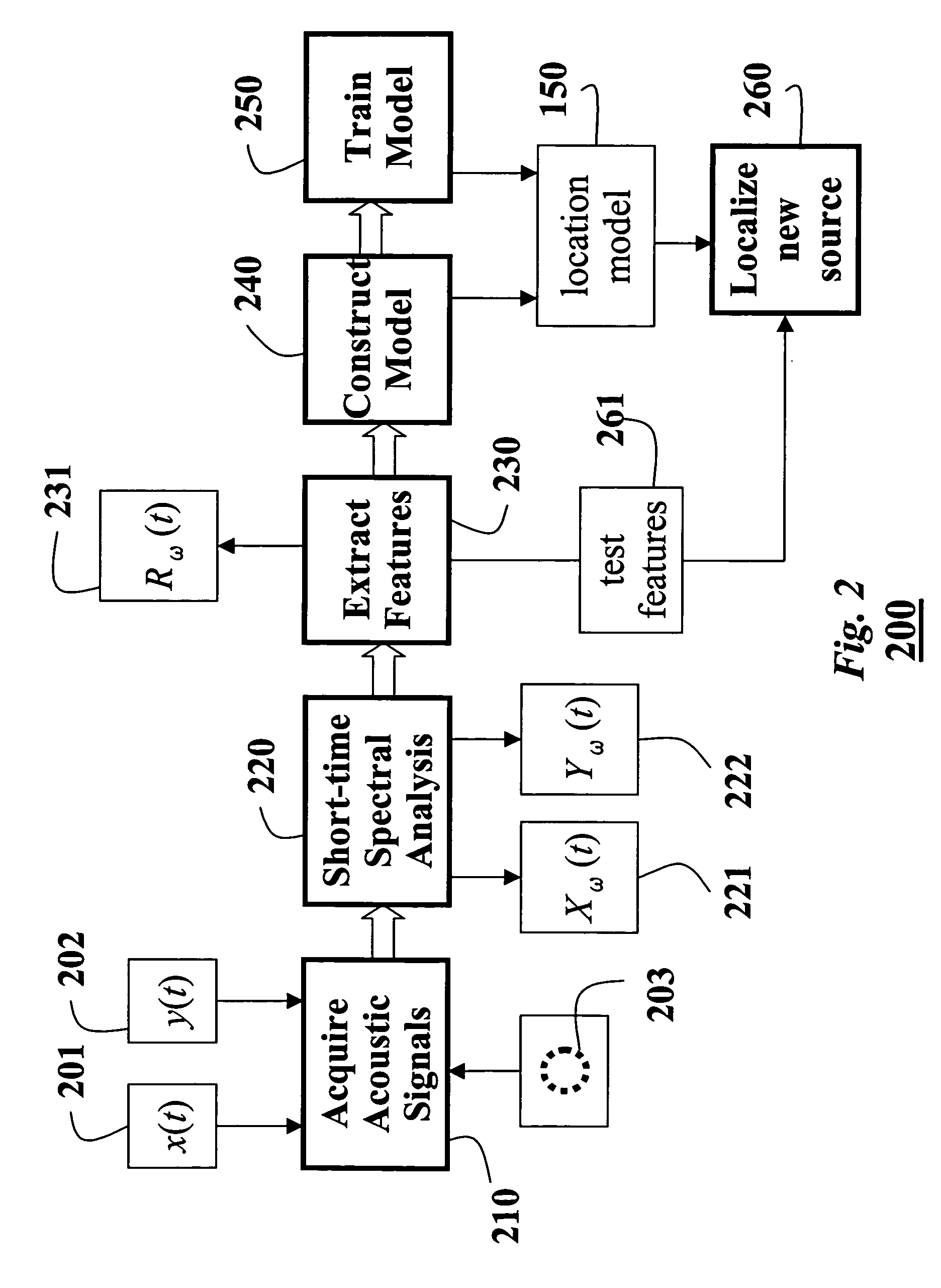Locating and tracking acoustic sources with microphone arrays
- Summary
- Abstract
- Description
- Claims
- Application Information
AI Technical Summary
Benefits of technology
Problems solved by technology
Method used
Image
Examples
Embodiment Construction
[0019]FIG. 1 shows a system for locating and tracking acoustic sources according to our invention. An array of microphones 110 is placed in an acoustic environment 120. The microphones are fixed in place at unknown positions, and the microphones have unknown response characteristics. The microphones are connected to a processor 130. The environment also includes one or more acoustic sources 140 at unknown locations, used for training. The sources can also move along unknown trajectories. The sources produce ‘training’ signals.
[0020] For simplicity, we describe the case where there are two microphones in the array. However, it should be understood that any number of microphones are possible by considering pair-wise microphone combinations.
[0021] Location Features
[0022] In order to have invariance from the nature of the acoustic source and microphone characteristics, we acquire relative acoustic features. We use the features to train a location model 150. Thus, the training is not ...
PUM
 Login to View More
Login to View More Abstract
Description
Claims
Application Information
 Login to View More
Login to View More - R&D
- Intellectual Property
- Life Sciences
- Materials
- Tech Scout
- Unparalleled Data Quality
- Higher Quality Content
- 60% Fewer Hallucinations
Browse by: Latest US Patents, China's latest patents, Technical Efficacy Thesaurus, Application Domain, Technology Topic, Popular Technical Reports.
© 2025 PatSnap. All rights reserved.Legal|Privacy policy|Modern Slavery Act Transparency Statement|Sitemap|About US| Contact US: help@patsnap.com



